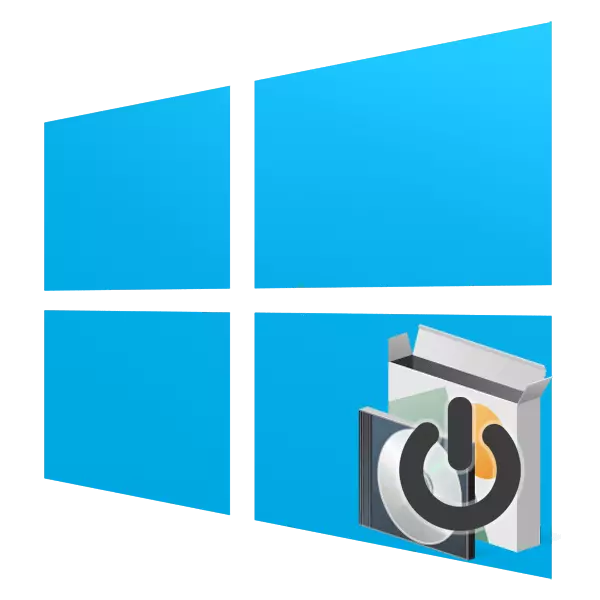
WINDOVS user can manage the work not only the programs that it installed independently, but also some system components. To do this, there is a special partition in OS that allows not only disabled unused, but also to activate various system applications. Consider how this is done in Windows 10.
Manage embedded components in Windows 10
The entry procedure itself in the section with the components is not yet different from the one that is implemented in the previous versions of Windows. Despite the fact that the program deletion section was transferred to the "Tens" "parameters", the link leading to work with the components still launches the "Control Panel".
- So, in order to get there, through the "Start" go to the "Control Panel", on the name of its name in the search field.
- Install the "Small Icons" viewer (or large) and open in "Programs and Components".
- Through the left panel, go to the "Enable or Disable Windows Components" section.
- A window will open in which all available components will be displayed. The check mark is noted what is included, the square is what is partially enabled, an empty square, respectively, means deactivated mode.
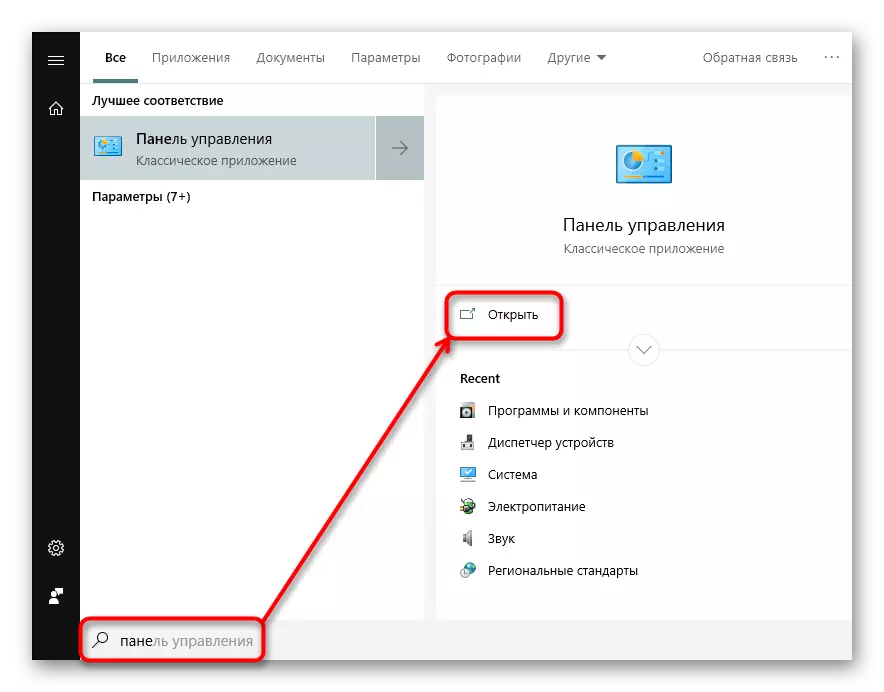
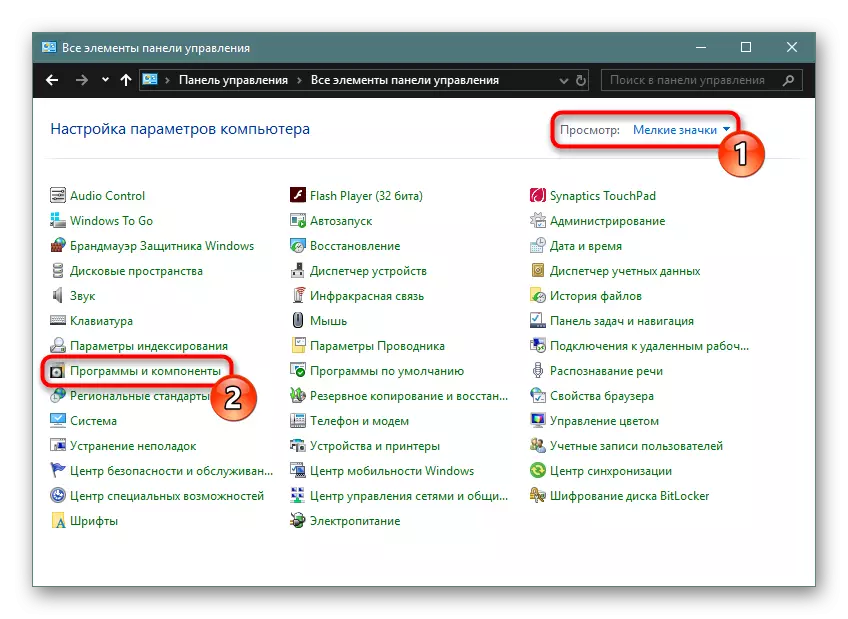
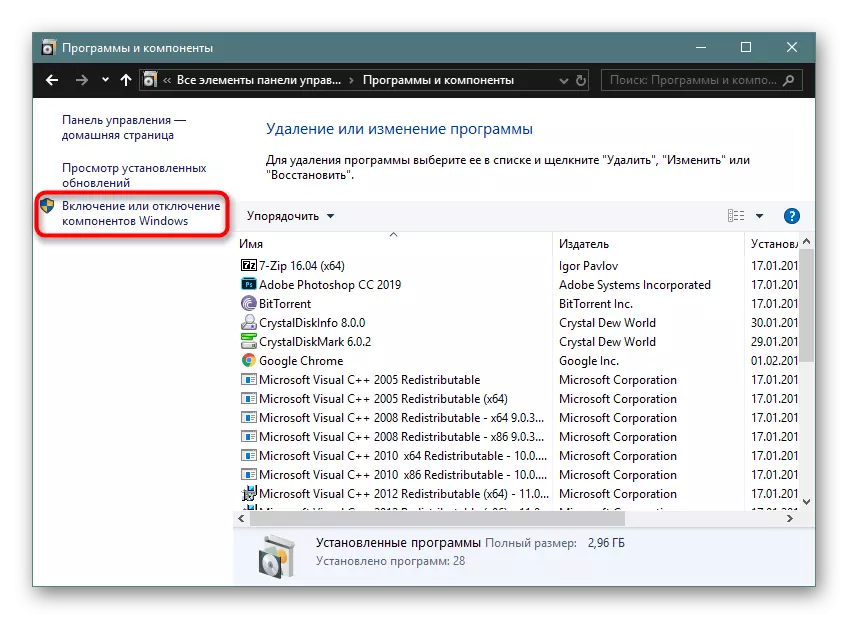
What can be disabled
In order to disconnect the inactive working components, the user can use the list below, and if necessary, return to the same section and turn on the desired one. Explain what to turn on, we will not - this every user decides for yourself. But with disabling by users, questions may arise - not everyone knows that it can be deactivated without affecting the stable operation of the OS. In general, it is worth noting that potentially unnecessary elements are already disabled, and working better do not touch, especially without understanding what you do at all.
Please note that the disconnection of the components does not affect the performance of your computer and does not unload the hard drive. It makes sense to do only if you are sure that the specific component is definitely not useful or its work interferes (for example, the built-in Hyper-V virtualization conflict with third-party software) - then deactivation will be justified.
You can decide what to disconnect, hovering on each component mouse cursor - a description of its purpose will immediately appear.
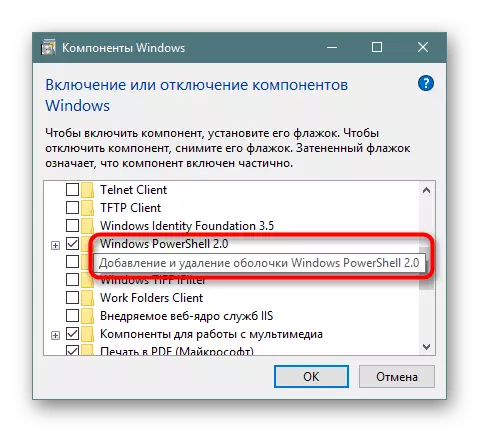
You can safely disable any of the following components:
- "Internet Explorer 11" - if you use other browsers. However, note that different programs can be programmed to open links within ourselves only through IE.
- "HYPER-V" is a component for creating virtual machines in Windows. It can be disabled if the user does not know what virtual machines are in principle or uses third-party hypervisors of the VirtualBox type.
- ".NET Framework 3.5" (including 25 and 3.0) - In general, it does not make sense to disable it, but some programs can sometimes use this version instead of newer than 4. + and higher. If an error occurs, the launch of any old program running only from 3.5 and below, it will be necessary to re-enable this component (the situation is rare, but possible).
- Windows Identity Foundation 3.5 is an addition to .NET Framework 3.5. Disable only if the same thing made with the previous point of this list.
- "SNMP protocol" - an assistant in a fine setting of very old routers. No new routers nor old, if those are configured for normal home use.
- "IIS's implemented web core" is an application for developers, useless for a regular user.
- "Built-in envelope launch module" - starts applications in isolated mode, provided that they support such an opportunity. An ordinary user does not need this function.
- "Telnet client" and "TFTP client". The first is able to remotely connect to the command prompt, the second - send files via the TFTP protocol. It is usually not used by simple people.
- "Operating Folder Client", "RIP Listener", "Simple TCPIP Services", Active Directory Services for Lightweight Directory Access "," IIS Service "and" MultiPoint Connector "- Corporate Use Tools.
- "The components of previous versions" - occasionally is used by very old applications and are included by them alone if necessary.
- "RAS-connected Manager Administration Package" - designed to work with VPN through the possibilities of Windows. I do not need third-party VPN and can be turned on automatically when necessary.
- "Windows Activation Service" is a tool for developers not related to the license operating system.
- The Windows Tiff Ifilter filter - speeds up the launch of TIFF files (raster images) and can be disconnected if you do not work with this format.
Some of the listed components are likely to be disabled. This means that the activation of them is most likely to be needed. In addition, in different amateur assemblies, some of those listed (and non-discovered too) components may not be at all - this means the author of the distribution has already deleted them independently when modifying the standard image of Windows.
Solving possible problems
Not always work with components occurs smoothly: some users can not open this window or change their status.
Instead of the component window white screen
There is a problem associated with the launch of the components window for their further configuration. Instead of a window with a list, only an empty white window is displayed, which is not simplified even after the multiple attempts to start it. There is a simple way to correct this error.
- Open the registry editor by pressing the Win + R keys and logging in the Regedit window.
- Insert the following in the address bar: HKEY_LOCAL_MACHINE \ SYSTEM \ CURRENTCONTROLSET \ CONTROL \ Windows and press ENTER.
- In the main part of the window we find the "CSDVersion" parameter, quickly press it by two times the left mouse button to open, and set the value 0.
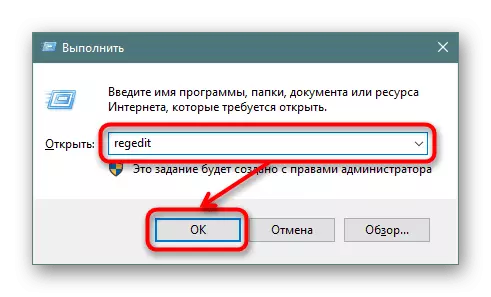
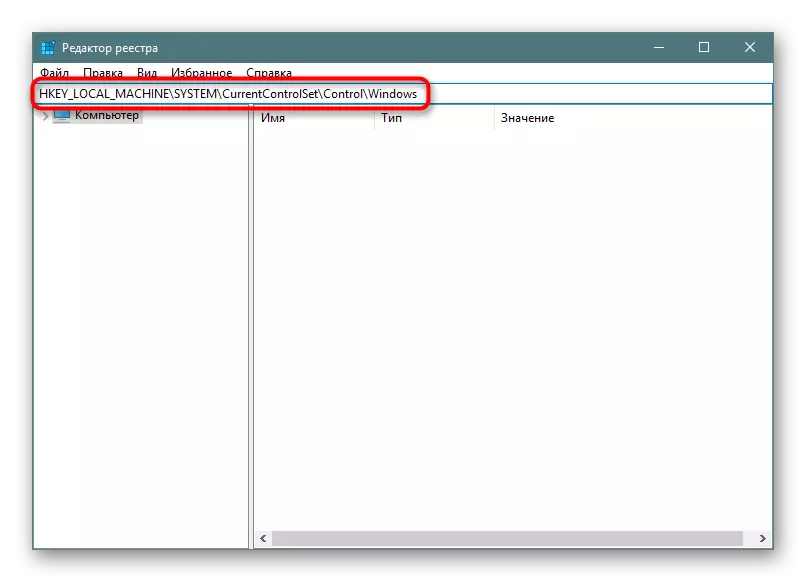
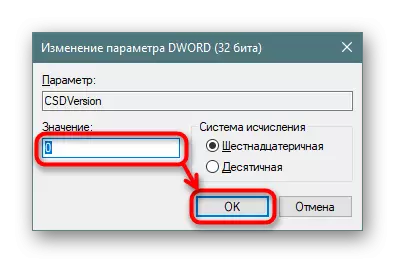
Component does not turn on
When it is impossible to translate the state of any component to active, do one of the following options:
- Write down somewhere a list of all components that work at the moment, disconnect them and restart the PC. Then try to turn on the problem, after all those that turned off, and restart the system again. Check if the desired component turned on.
- Load in "Safe Mode with Network Driver Support" and turn on the component there.
READ ALSO: We enter safe mode on Windows 10
Component repository was damaged
The problem of the problem listed above is the damage to system files that cause a failure in the operation of the partition with the components. You can eliminate it, following the detailed instructions in the article on the link below.
Read more: Using and restoring system file integrity check in Windows 10
Now you know what you can turn off in the "Windows components" and how to solve possible problems in their launch.
